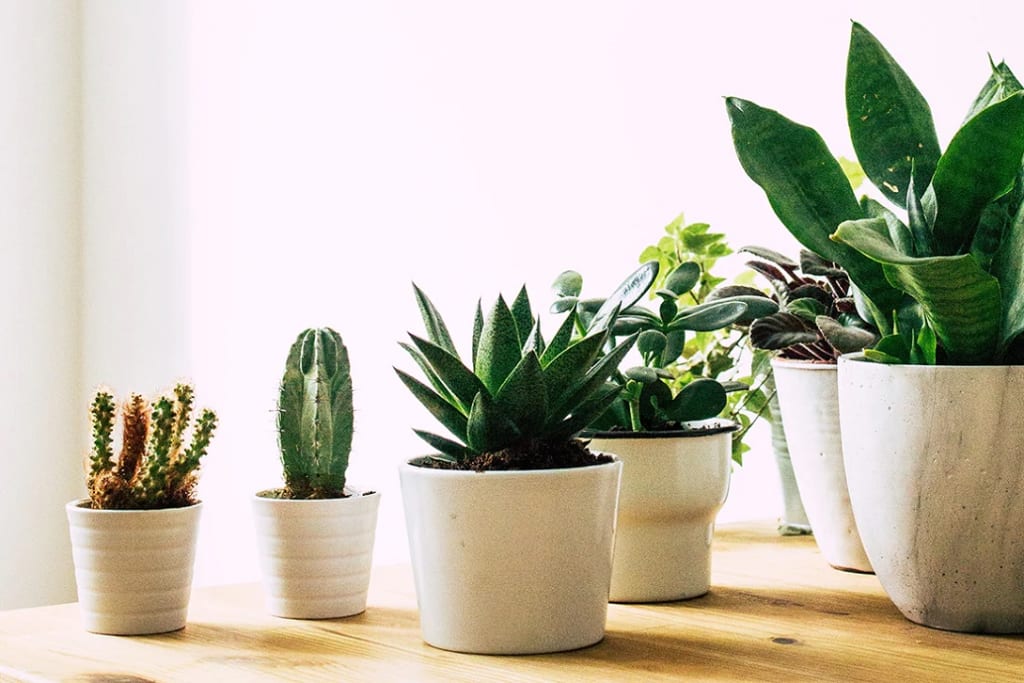The Role of Plants in Improving Indoor Air Quality
The Role of Plants in Improving Indoor Air Quality

The Role of Plants in Improving Indoor Air Quality
The quality of the air we breathe indoors has a profound impact on our health, productivity, and overall well-being. Indoor air can be laden with pollutants from various sources, including volatile organic compounds (VOCs), particulate matter, and other harmful substances. To address this issue, an eco-friendly and natural solution lies in the presence of plants. Plants have evolved over millions of years to efficiently purify the air through a process called phytoremediation. In this article, we will explore the multifaceted role of plants in improving indoor air quality, the specific mechanisms by which they achieve this, and the scientific evidence supporting their effectiveness.
Air-Purifying Mechanisms of Plants
1.1. Absorption of Harmful Pollutants: Plants have specialized structures like leaves, roots, and stems that can absorb pollutants from the air. VOCs such as formaldehyde, benzene, and xylene are efficiently absorbed by plant leaves and then transported to the roots, where microorganisms in the soil break them down into harmless byproducts.
1.2. Filtration of Particulate Matter: Plants can effectively filter particulate matter from the air, including dust, pollen, and other allergens. These particles get trapped on the surface of leaves and stems, reducing their presence in the indoor environment.
1.3. Oxygen Production: Through photosynthesis, plants take in carbon dioxide (CO2) and release oxygen (O2), thus contributing to a healthier and more oxygen-rich indoor environment.
1.4. Microbial Activity in the Soil: The soil in which plants grow hosts a diverse community of beneficial microorganisms. These microbes interact with the plant roots in a symbiotic relationship, breaking down pollutants and further improving air quality.
Plants and VOC Removal
2.1. Formaldehyde: Formaldehyde is a common indoor pollutant found in furniture, carpets, and building materials. Numerous plants, including the Peace Lily (Spathiphyllum), Spider Plant (Chlorophytum comosum), and Aloe Vera (Aloe barbadensis miller), have been shown to effectively remove formaldehyde from the air.
2.2. Benzene and Toluene: Benzene and toluene are VOCs commonly found in household products and emissions from vehicles. Plants like the Rubber Plant (Ficus elastica) and the Dracaena species have demonstrated the ability to absorb these harmful substances.
2.3. Xylene: Xylene is a VOC found in paints, adhesives, and cleaning agents. Indoor plants such as the Peace Lily and the English Ivy (Hedera helix) have been shown to significantly reduce xylene levels in the air.
Plants and Particulate Matter Filtration
3.1. Spider Plant (Chlorophytum comosum): Spider plants are known for their ability to trap and remove particulate matter, dust, and allergens from indoor air, creating a cleaner and healthier environment.
3.2. Boston Fern (Nephrolepis exaltata): Boston ferns have high transpiration rates, which help to increase indoor humidity and effectively reduce airborne particles.
3.3. Areca Palm (Dypsis lutescens): Areca palms are excellent at filtering out dust and particulate matter, making them valuable additions to indoor spaces.
Plants and Humidity Regulation
4.1. Peace Lily (Spathiphyllum): Peace lilies can contribute to maintaining optimal indoor humidity levels through transpiration, preventing dry air that can lead to respiratory issues and skin problems.
4.2. Lady Palm (Rhapis excelsa): Lady palms release moisture into the air, creating a more comfortable and healthier indoor environment.
Plants and Carbon Dioxide (CO2) Reduction
5.1. Snake Plant (Sansevieria trifasciata): Snake plants are known for their ability to continue photosynthesizing even at night, making them effective in reducing CO2 levels in bedrooms and other indoor spaces during nighttime.
5.2. Aloe Vera (Aloe barbadensis miller): Aloe vera is another plant that can absorb CO2 and release oxygen, helping to maintain a balanced indoor atmosphere.
Plants and Airborne Mold Removal
6.1. Golden Pothos (Epipremnum aureum): Golden pothos is effective at reducing mold spores and improving indoor air quality, making it an excellent choice for mold-prone areas.
6.2. Bamboo Palm (Chamaedorea seifrizii): Bamboo palms can help reduce airborne mold, especially in humid indoor environments.
Plants and Noise Reduction
7.1. Rubber Plant (Ficus elastica): Rubber plants are known for their ability to absorb sound waves, making them effective noise reducers in indoor spaces.
7.2. Weeping Fig (Ficus benjamina): Weeping figs also contribute to reducing ambient noise, providing a quieter and more peaceful indoor setting.
Psychological Benefits of Indoor Plants
8.1. Stress Reduction: Numerous studies have demonstrated that the presence of indoor plants can lower stress levels and promote a sense of well-being and tranquility.
8.2. Improved Productivity: Indoor plants in workplaces have been associated with increased productivity, creativity, and job satisfaction.
8.3. Enhanced Cognitive Function: Greenery in indoor spaces has been linked to improved cognitive function, including better concentration and memory retention.
Maintaining Healthy Indoor Plants
9.1. Light Requirements: Different plants have varying light preferences, so it's crucial to place them in areas with suitable lighting conditions.
9.2. Watering: Overwatering or underwatering can harm plants. Learn about the watering needs of each plant and establish a watering routine accordingly.
9.3. Soil and Potting: Use well-draining potting soil and choose pots with drainage holes to prevent waterlogged roots.
9.4. Regular Cleaning: Dust can accumulate on plant leaves, reducing their ability to absorb pollutants. Regularly wipe the leaves to keep them clean and dust-free.
Conclusion
Plants play a multifaceted and vital role in improving indoor air quality. Through their natural ability to absorb harmful pollutants, filter particulate matter, release oxygen, and regulate humidity, indoor plants offer an eco-friendly and effective solution to the problem of indoor air pollution. Furthermore, the psychological benefits they bring, such as stress reduction and enhanced cognitive function, contribute to creating healthier and more pleasant indoor environments. By incorporating air-purifying plants into our homes, offices, and public spaces, we can promote better health, well-being, and productivity while fostering a deeper connection with nature in our daily lives.
About the Creator
Kavya Organic Garden
Passionate about home gardening, plant care, growth, and maintenance. Join me on this exciting journey of organic practices and sustainable gardening! 🌱






Comments
Kavya Organic Garden is not accepting comments at the moment
Want to show your support? Send them a one-off tip.